I was out in Reynoldsburg late last June for The Battle of Blacklick Creek, an annual Civil War re-enactment camp and battle. This is the largest battle of its kind in Ohio. There was plenty of soldiering to see, and quite a few vendors and demonstrations with lots of information about the lives and times of perhaps the most dramatic historical event in United States history. I found many people who were very passionate about the subject that they love, and who want to tell others about our common history. Here’s some of what I saw.
It was hot and humid, and the re-enactors were in woolen clothing, just like soldiers wore 150 years ago. ‘I portray a Confederate because grey is cooler than the navy blue that the Yankees wear’ was a joke I heard more than once.
Here’s two of the leaders of the re-enactors, having a bit of fun for the crowd. The man in grey portraying a Confederate quartermaster sergeant is Robert Mergel, the event coordinator. He made the point that the re-enactors are very dedicated to bringing living history to their neighbors, and that they make no money off of this hobby- to the contrary, they spend a fair amount out of their own pockets. He also said that each and every one of us is a living historian- interesting food for thought.
Robert mentioned that he would be wearing blue in the cold weather!
Summer is the re-enactor’s season to camp out at various events, living as the soldiers they portrayed once did. Re-enactors spend lots of time and effort to be as accurate in their portrayals and their gear as they can be. They are typically members of organized units that travel to various re-enactments around the country.
You’ll also notice in these pictures that women are a growing number of re-enactors, whether portraying soldiers or dressed as northern or southern belles. Children also participate.
Turnout was good- plenty of people were visiting the displays and interacting with various re-enactors. There was plenty to learn!
This re-enactor had trained his mule to participate in battle, remaining calm ‘under fire’. He mentioned that she was rather spirited, and had once treed a raccoon for 2 days in her field!
There were Civil War surgeon re-enactors who discussed the state of medical care in the 19th century. If I remember right, something like 73% of amputees survived having their limb(s) removed in battlefield medical tents.
During a demonstration, a Confederate re-enactor came up holding his face and told the surgeons that ‘the Yankees got his eye’. A surgeon told him that they could get him a glass eye. The soldier asked, could he pick the color? The surgeon replied that they would match the color of his remaining eye.
Jim Brown is an actual blacksmith who has a wealth of knowledge about the subject. Blacksmiths and farriers (hoof specialists) could command 30 dollars a month in Civil War armies, whereas soldiers earned just 13 dollars a month. Their services were held in high regard, since horses and mules were vital to moving men and equipment in that era. Your body wore out fairly soon doing this back-breaking labor, so careers were not long in this specialty. Jim asked for a volunteer re-enactor to bring his horse over for a demonstration.
Jim pointed out how a horse’s hooves have similarities to tractor treads- it’s not a coincidence that John Deere was a blacksmith before he became a farm equipment manufacturer. He demonstrated how to shoe a horse and angle the nails towards the edge of the hooves. A blacksmith had to bend the horseshoe nails (at 35 cents, the most expensive nail) quickly- horses would occasionally terribly gouge a man with a nail-studded hoof. Jim received 170 stitches to close up one such gash. Horseshoes would typically last 3-6 weeks.
Jim had all sorts of fascinating stories to tell. Often the village blacksmith was the only ‘village official’, and would sometimes perform marriages. Horseshoe nails could be bent into makeshift wedding rings.
There was even a brothel display!
Steve Ball is a musician and historian who played many songs popular during the Civil War, and was quite knowledgeable about the subject. He discussed a famous lady composer (whose name I unfortunately did not jot down) whose grave he visited, where he played the popular ballad ‘Lorene’ in her memory. Shortly after he did this, while reading her biography, he read that she absolutely hated the song ‘Lorene’!
Anthony Gibbs portrayed a colored Union soldier and effectively portrayed the fight to be able to fight for the Union and freedom despite many roadblocks. I was very impressed how performers such as Anthony were extremely knowledgeable and passionate about history.
Payton Seats, a 6th grader, portrayed famous Union drummer boy Johnny Clem, whose bravery at a young age made him the youngest non commissioned officer in US Army history. He was the last active-duty veteran of the Civil War, retiring at the rank of Major General in 1915.
Robert and Barbara Brugler portrayed Abraham and Mary Todd Lincoln. During their performance, Abe started to take off his coat, but Mary Todd protested strongly- and Robert mentioned that to appear in public with one’s coat off would be similar to a modern person walking around in public in their underwear! Victorian etiquette was quite different than ours. Husband and wife would call each other ‘Mister’ or ‘Missus’ in public, and they would not touch, let alone kiss.
Best line by Honest Abe: while I was taking his picture, Robert wisecracked, ‘looks like I’m being shot by a Canon!’
There was a Gatling Gun demonstration.
Troops were inspected by their officers, and marched off to do battle.
Uniforms were often elaborate. You’d see the occasional Freemason patch or pin on jackets of either side, leading to the phrase ‘brother fought against brother’, for Freemasons were (and are) an international brotherhood.
Rom Muszynski portrays Polish General W. B. Krzyzanowski, who fought for the Union. Rom narrated the course of the battle, and had many fascinating facts to impart to the audience. He was generous with his time.
The battle unfolded…
The sound of cannon fire was very loud. All of the weapons used by the re-enactors were actual weapons, firing gunpowder charges (but no shot, of course).
Cannon fire blew the occasional giant smoke ring high into the sky.
The battle ended with a moment of silence for all of the casualties of the Civil War.
The surgeons had plenty of work to do. ‘They saved my hand!’ one soldier cried to the crowd.
The two sides then cleared their weapons and lined up and ‘charged’ at the audience.
The soldiers left the field, passing the audience in review.
Two re-enactors (Herb Pfaff and Gary Chambers) portrayed Generals Grant and Lee signing the formal surrender of the Confederacy at Appomattox Court House, concluding the events.
It was quite an experience, and well worth attending. I’ll be back next year!

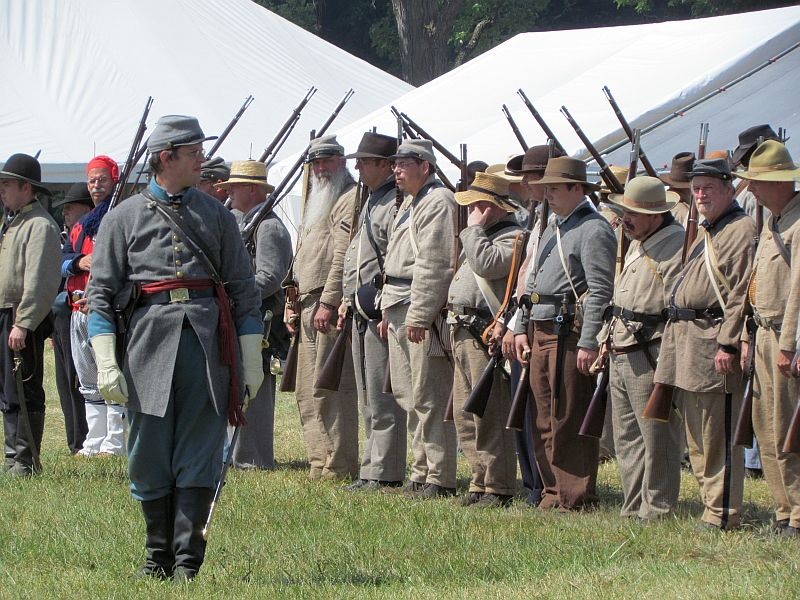

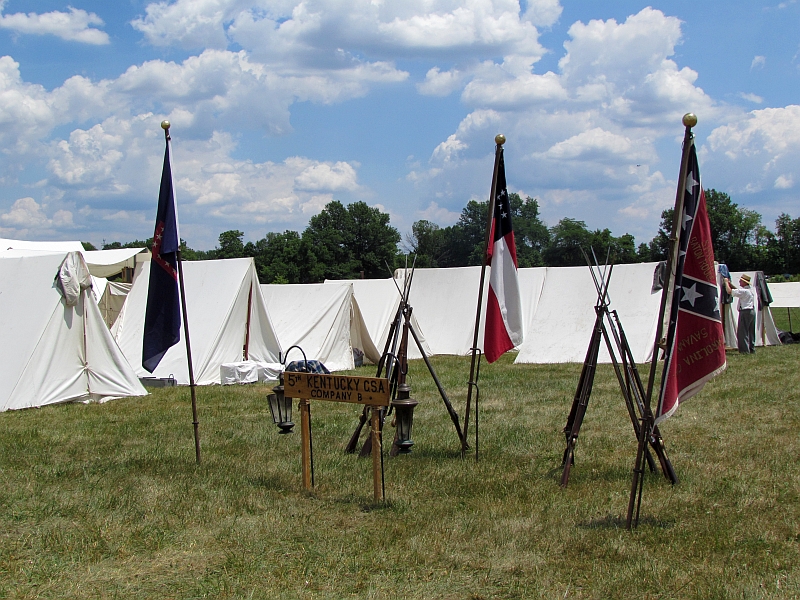
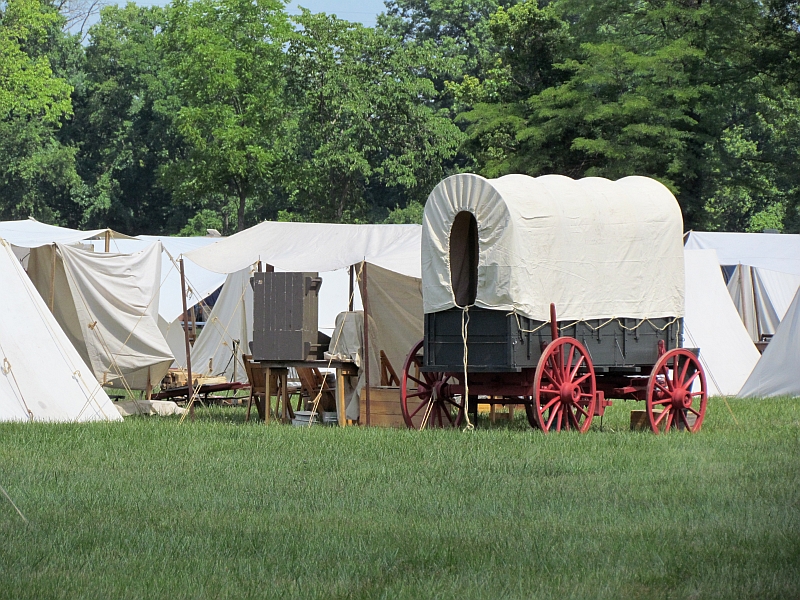

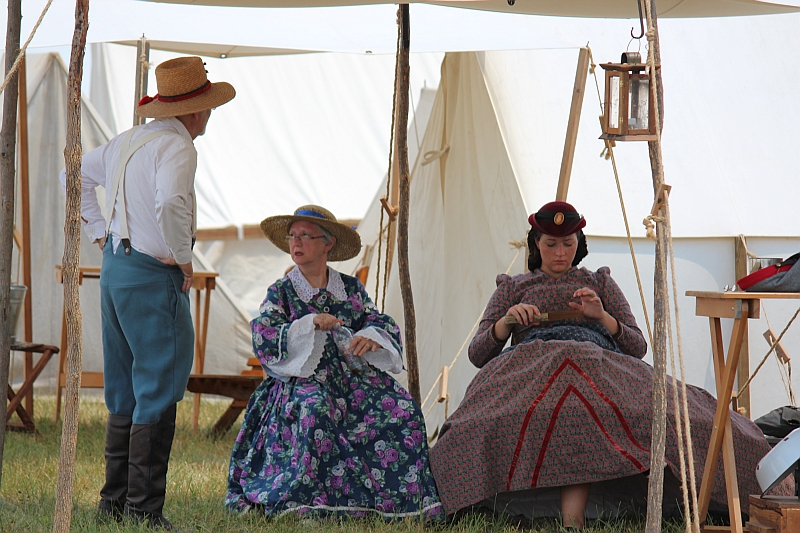
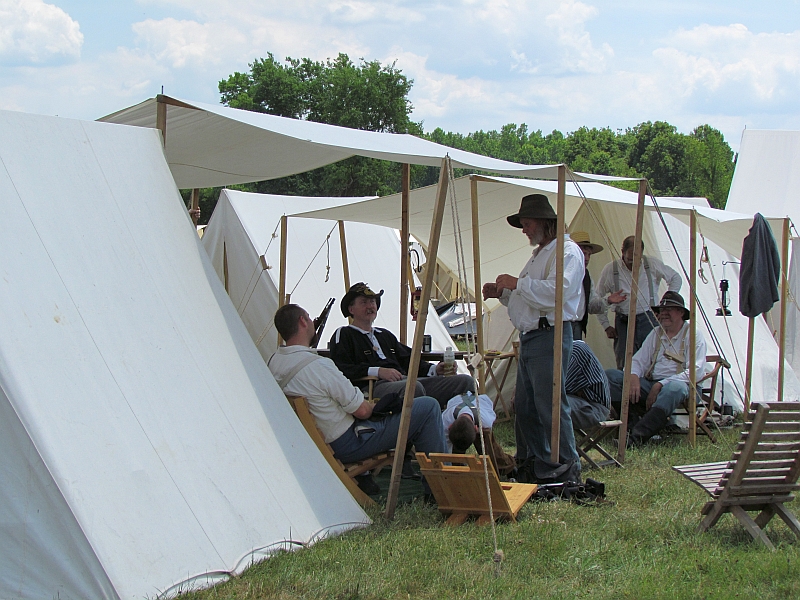
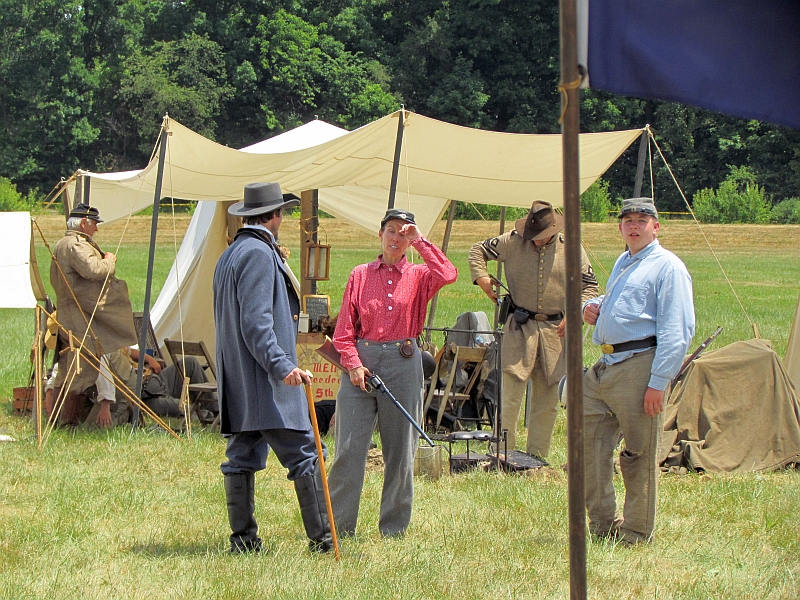
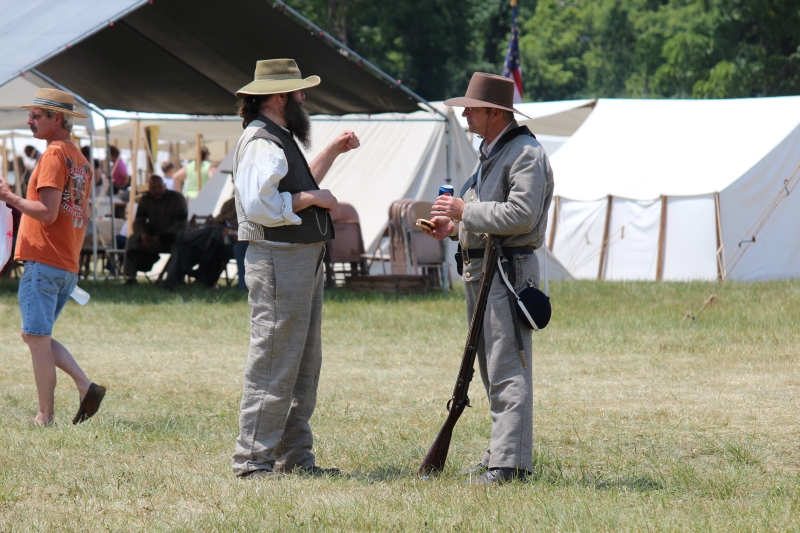

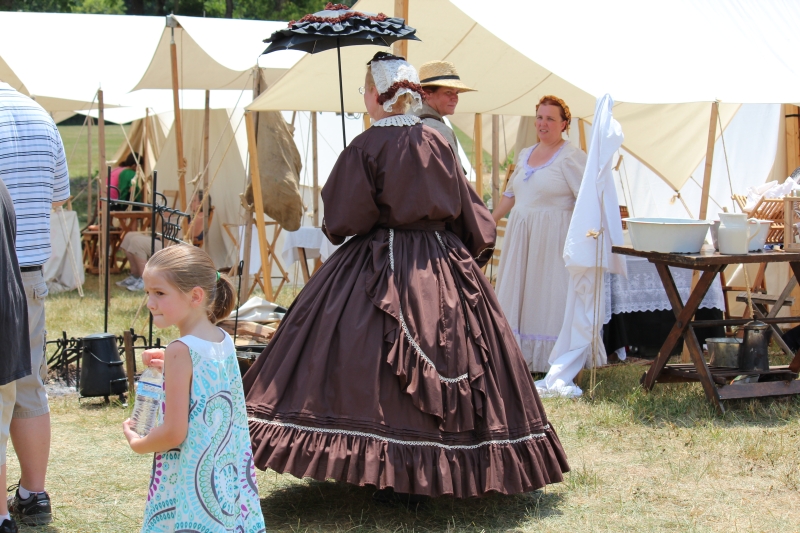

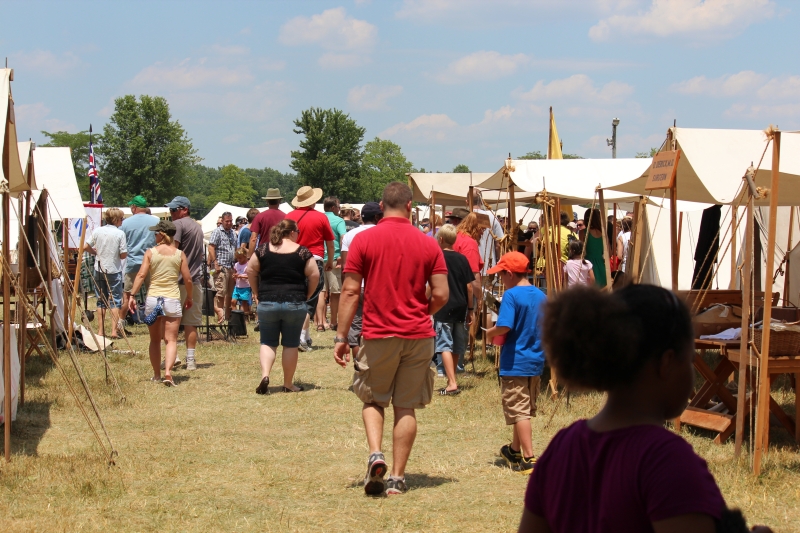
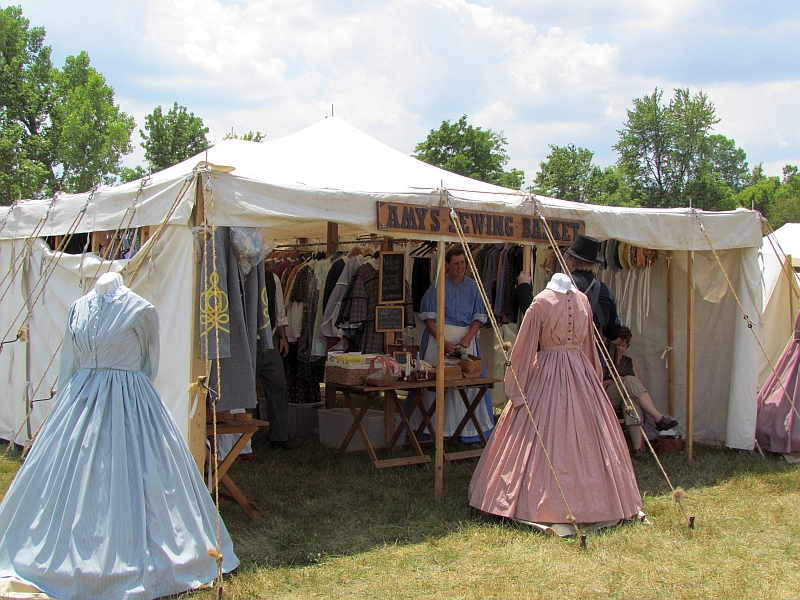

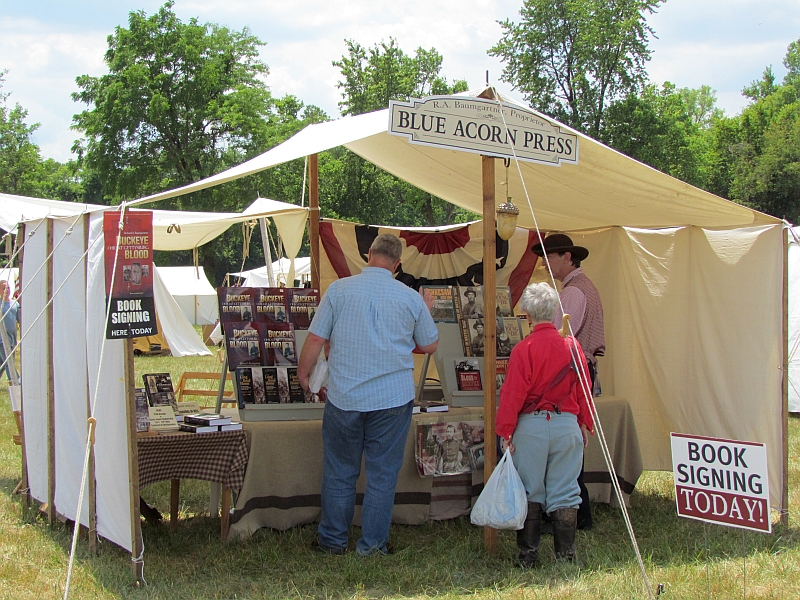
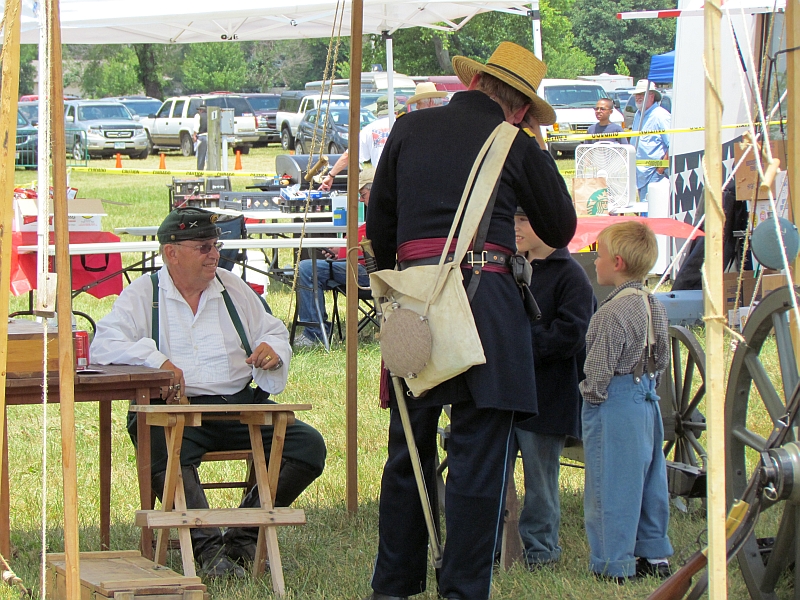

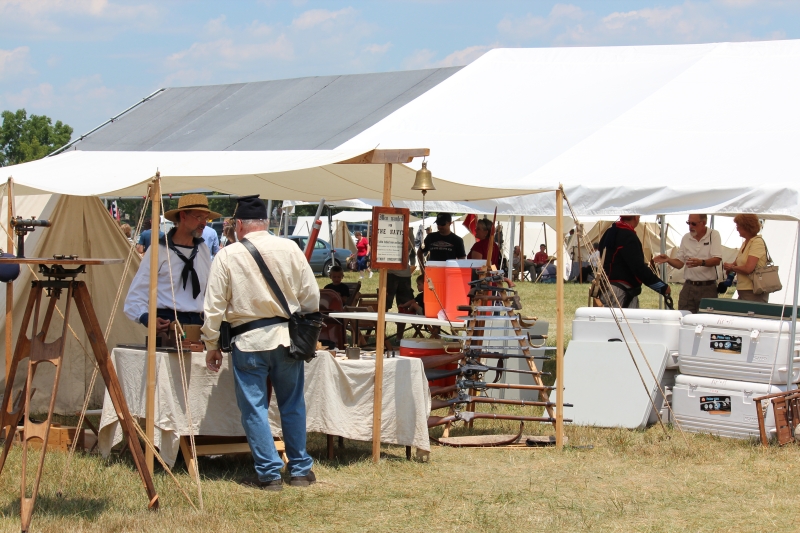
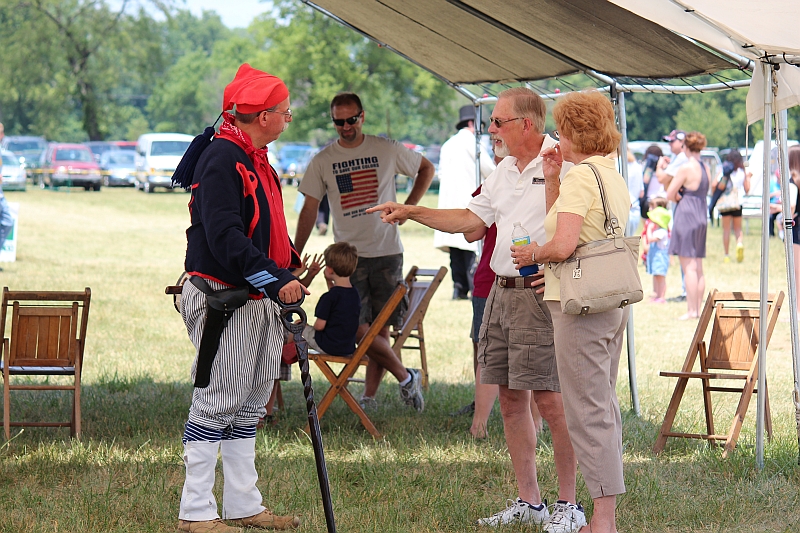
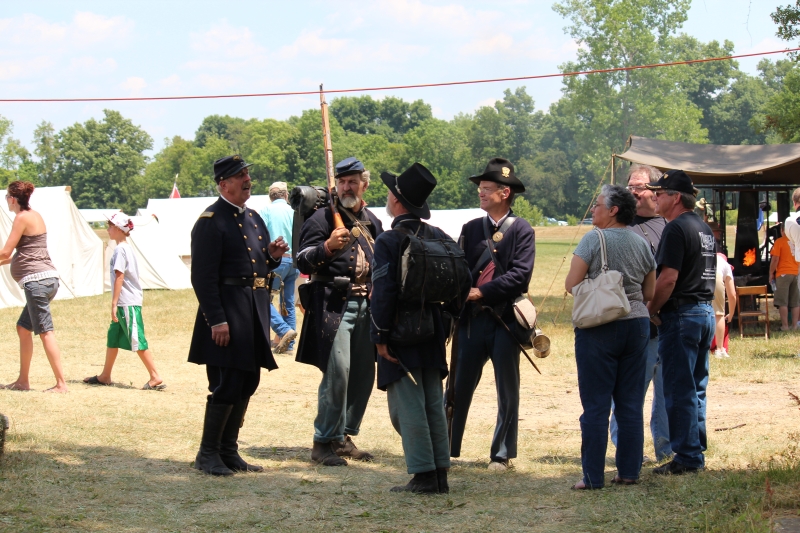
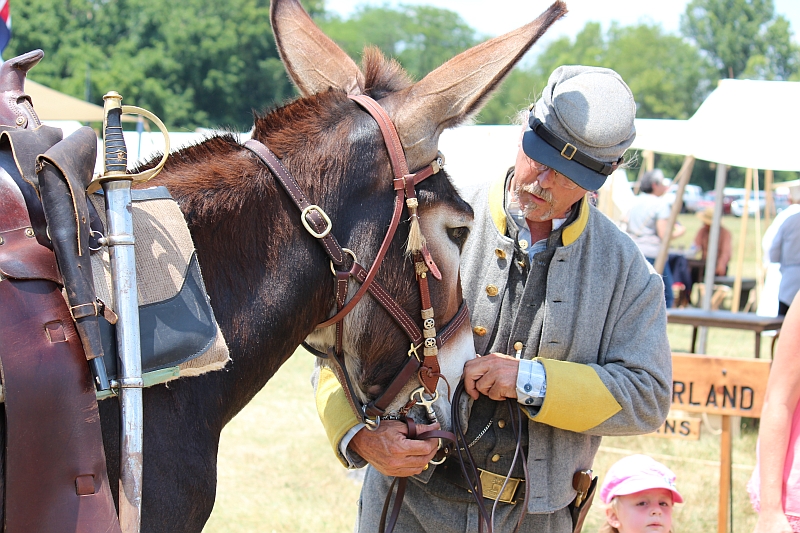
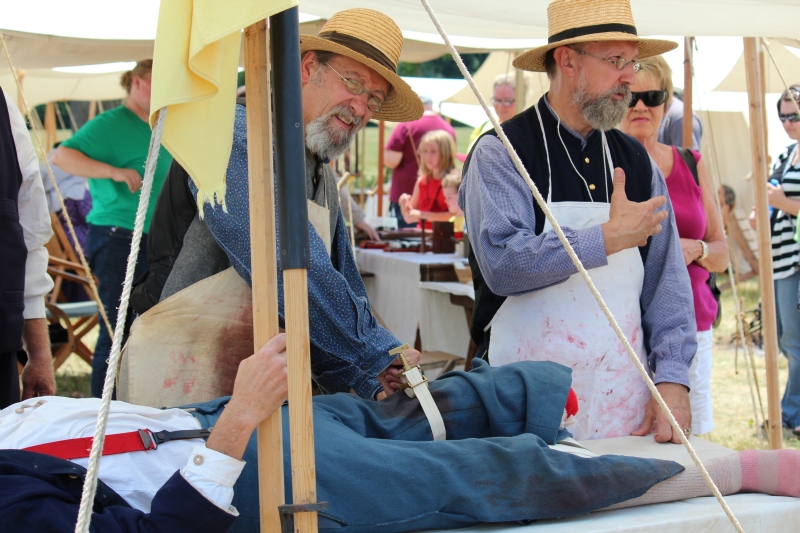




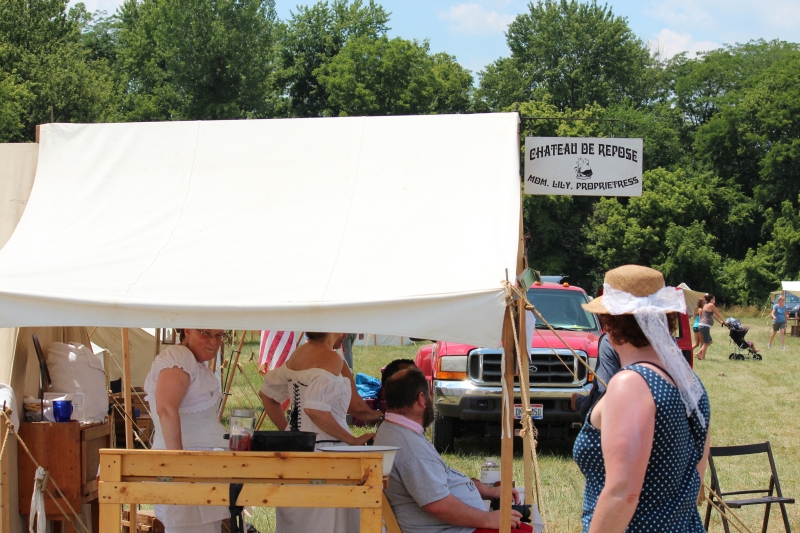
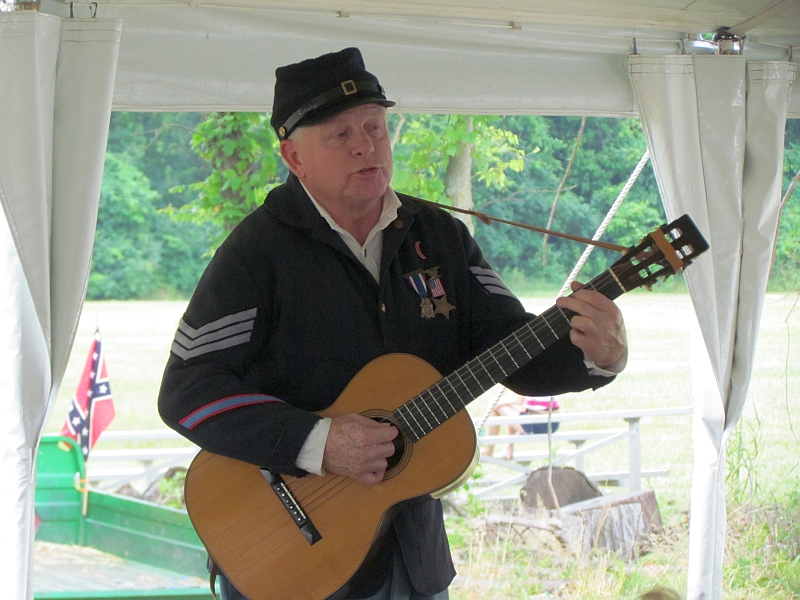
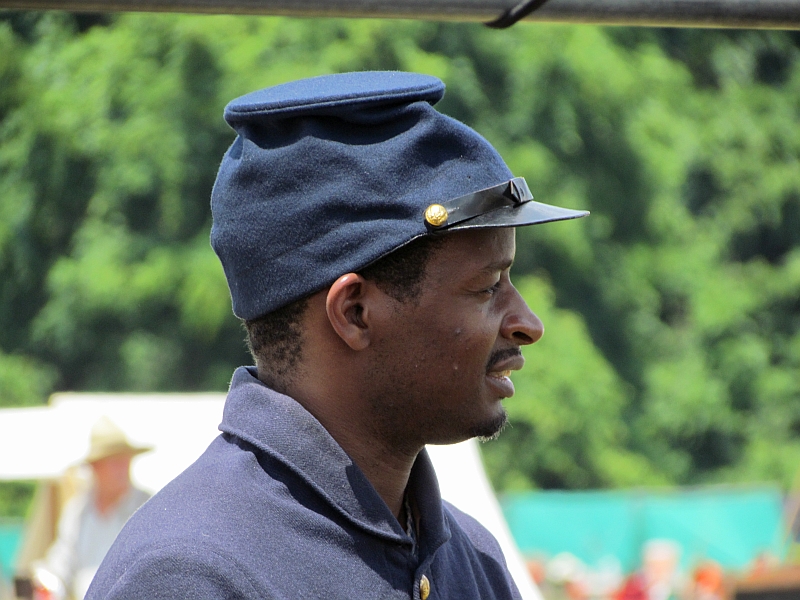
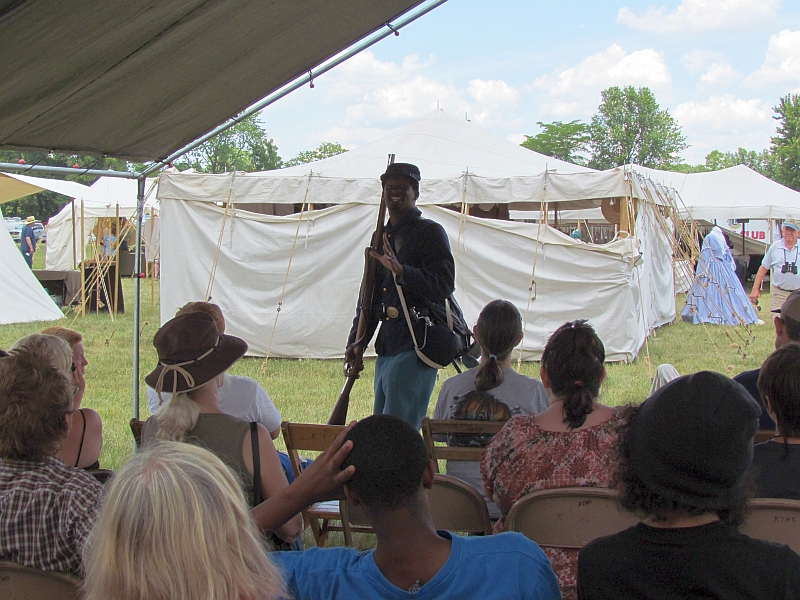

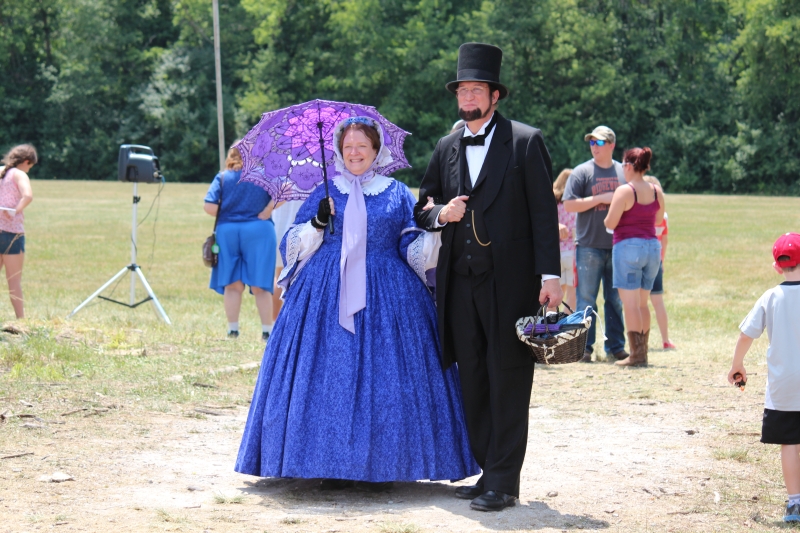
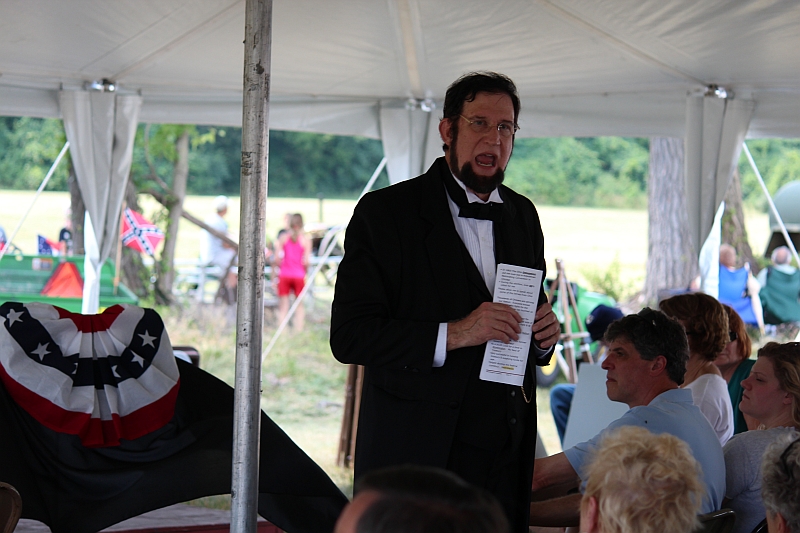
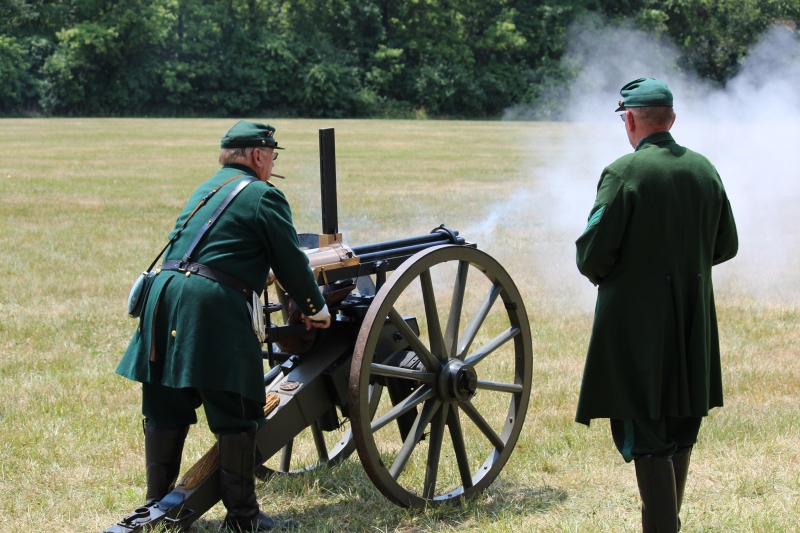

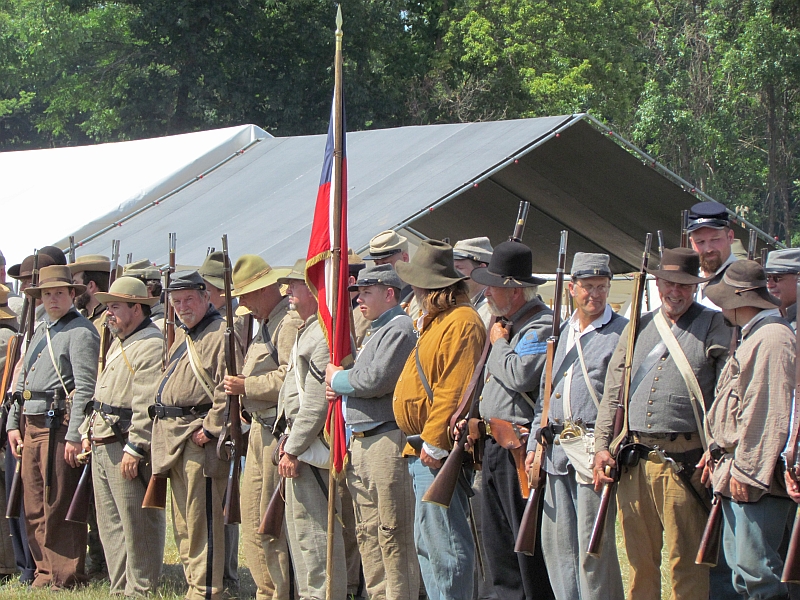
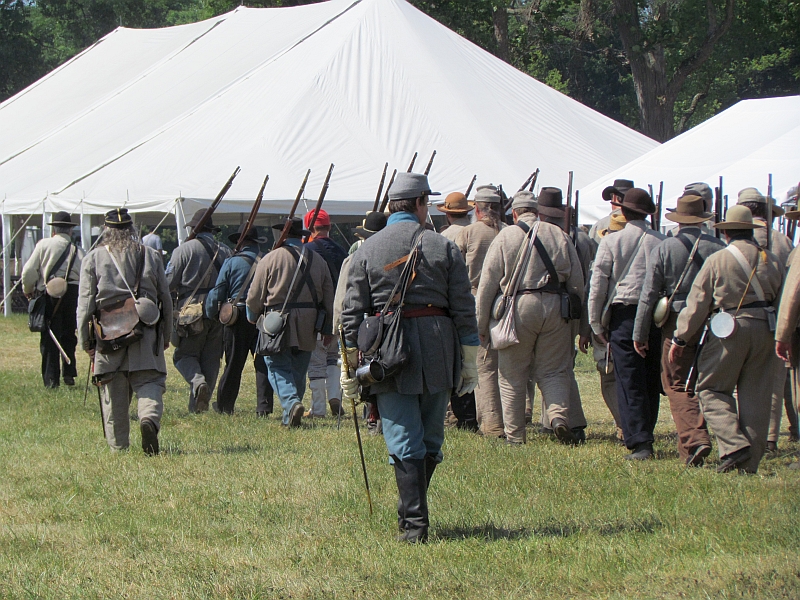
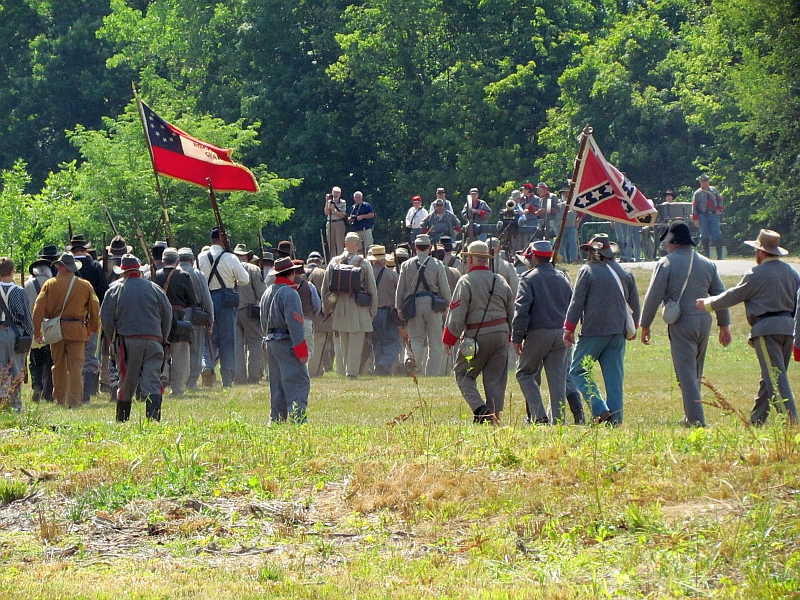
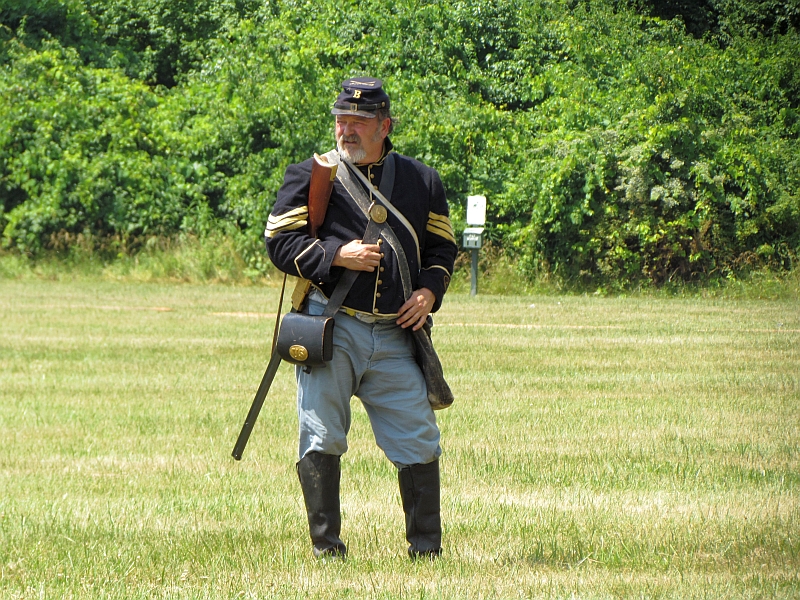

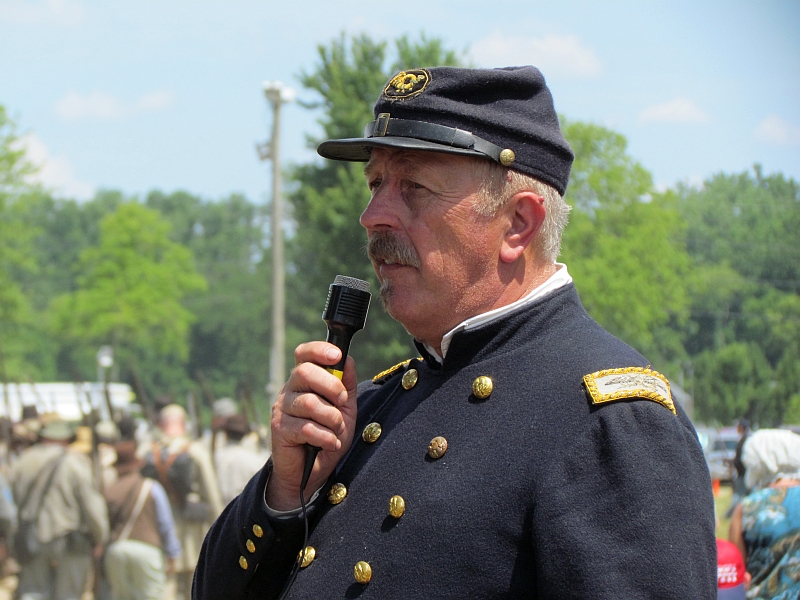
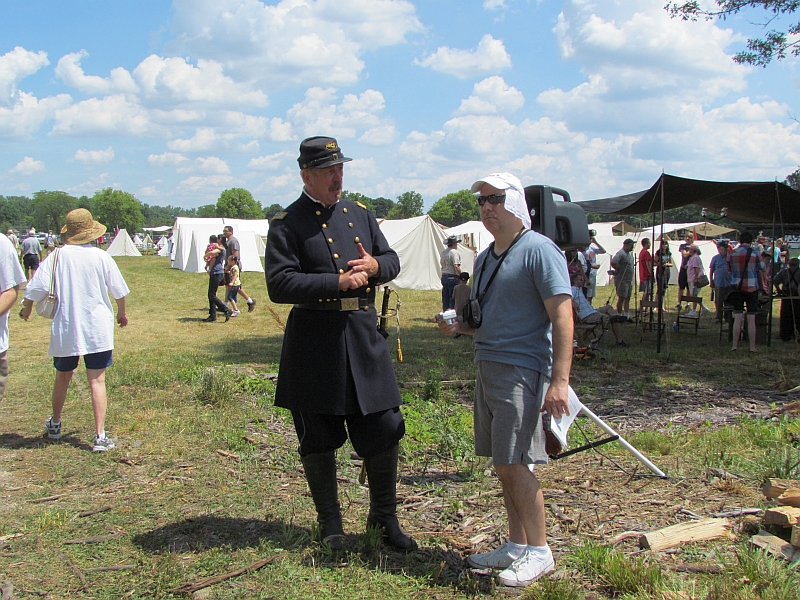

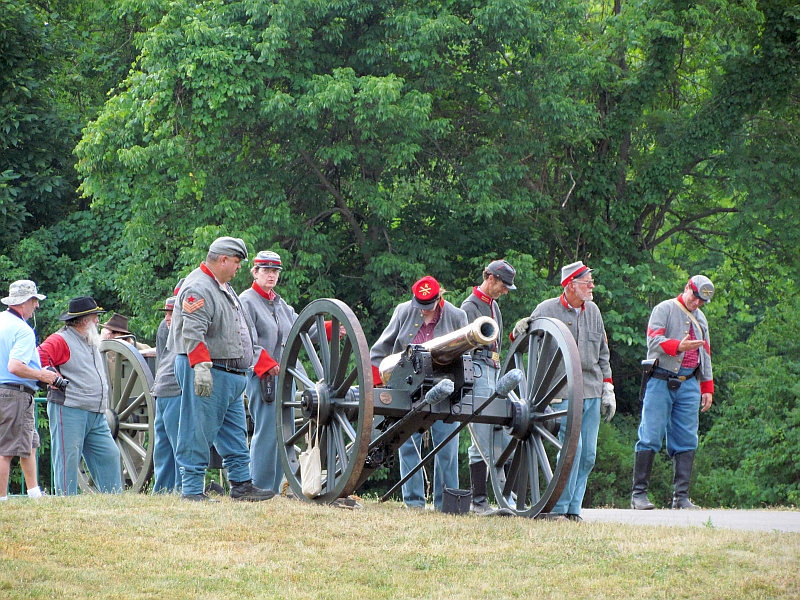

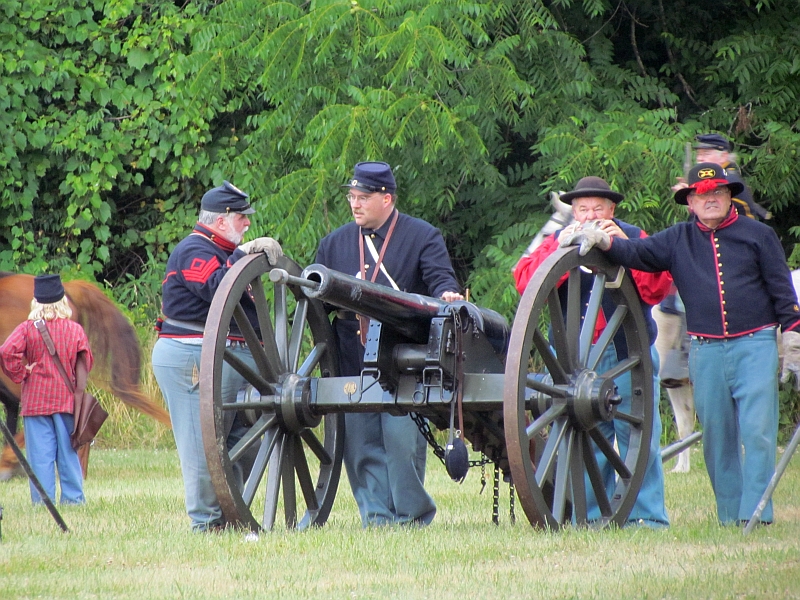
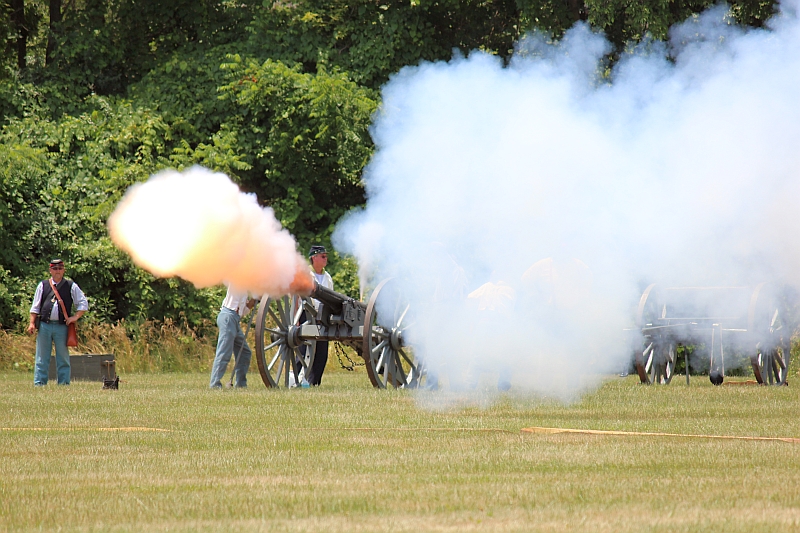
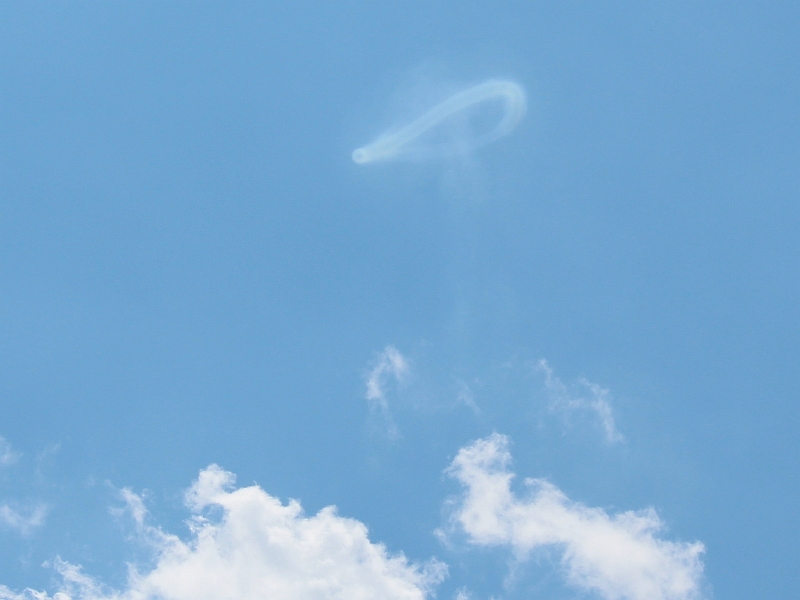
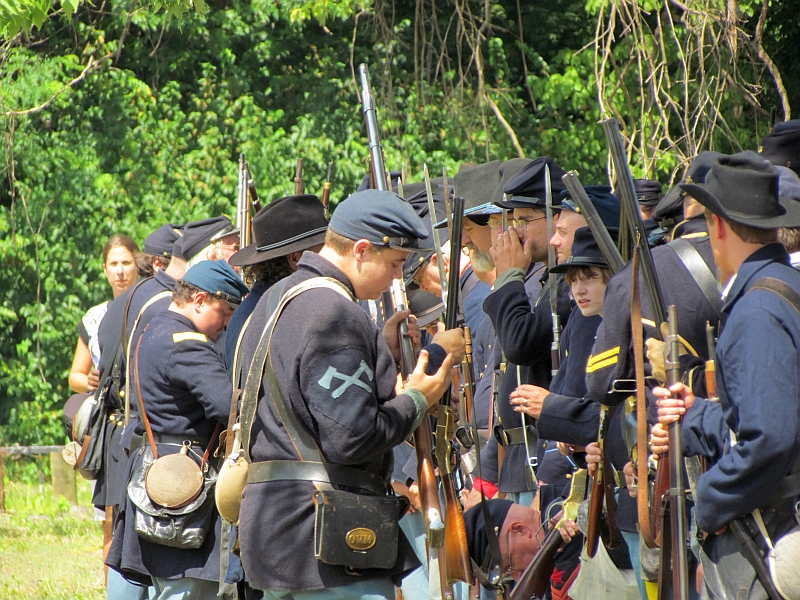
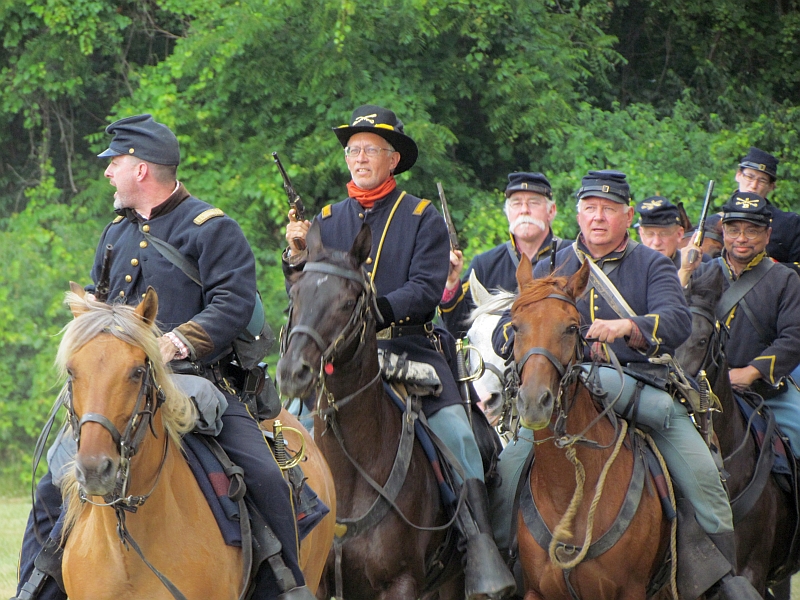
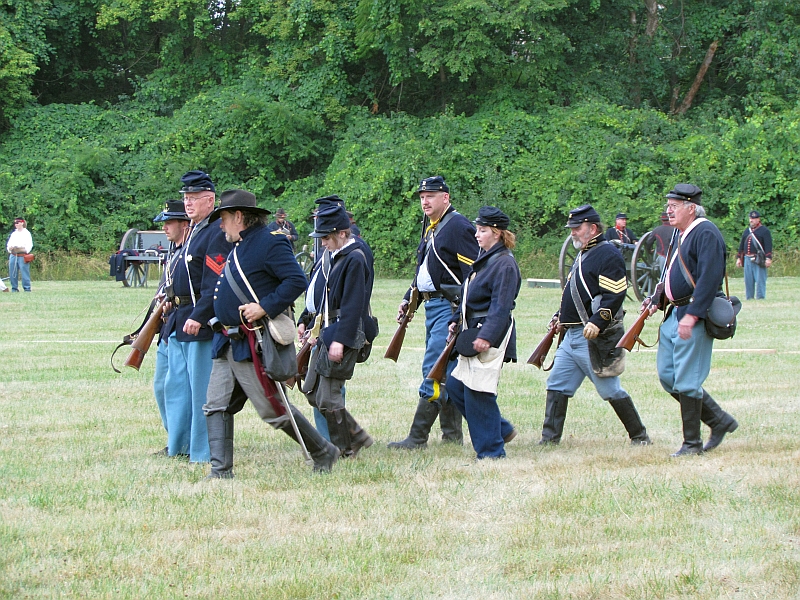
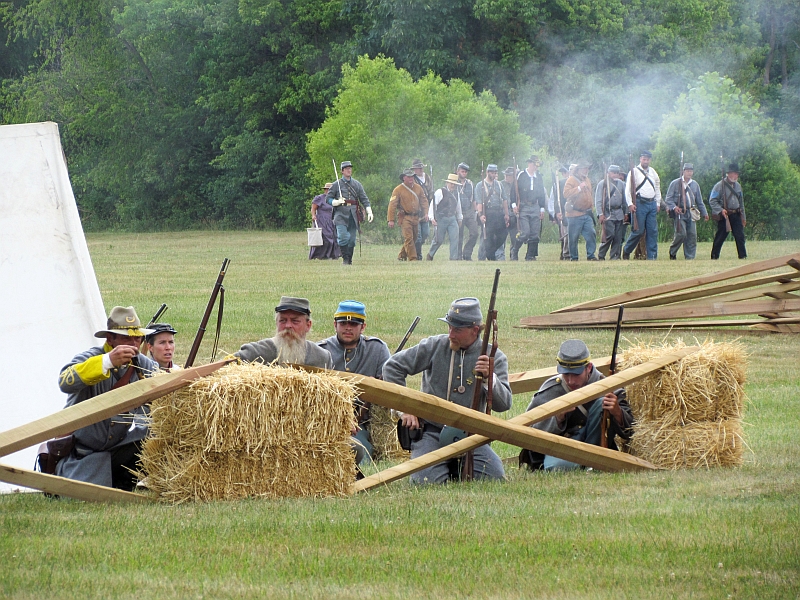
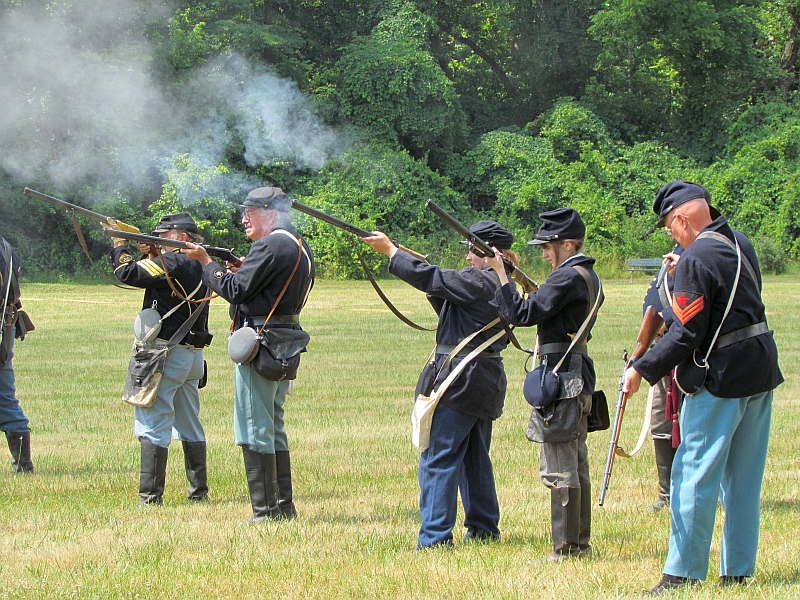
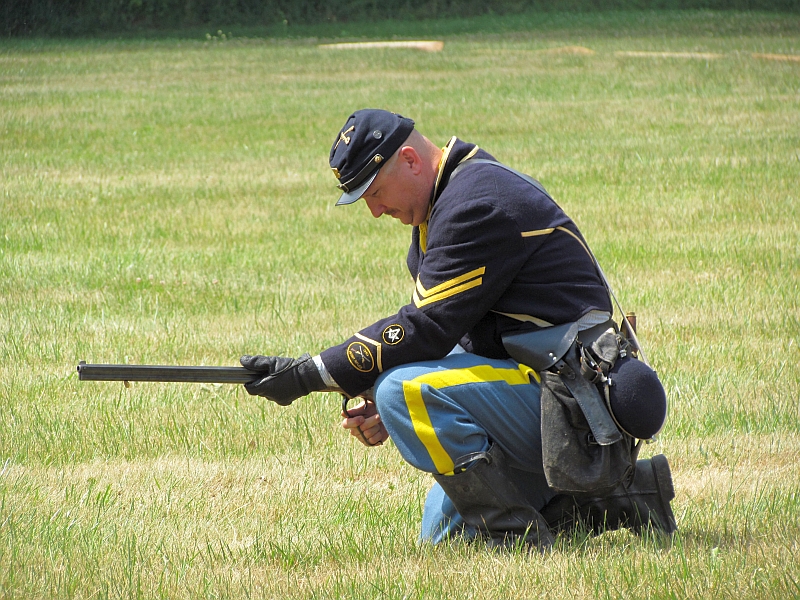
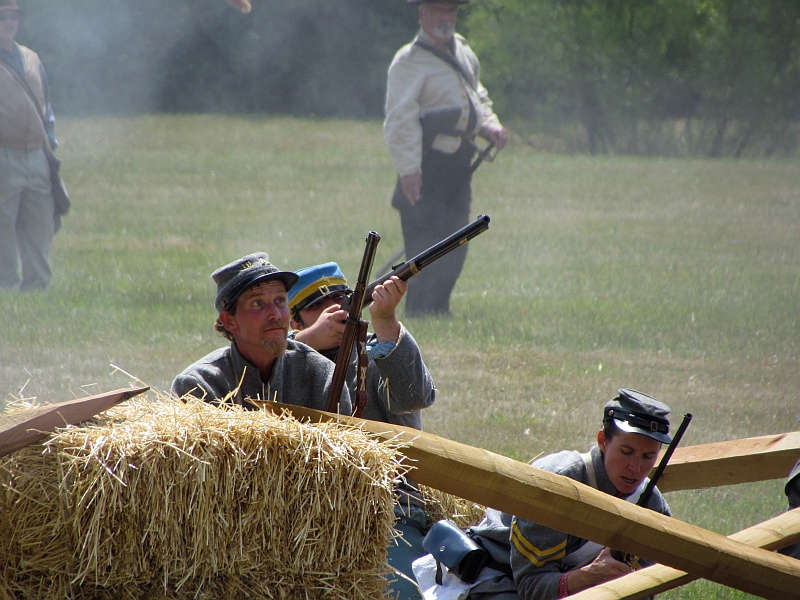
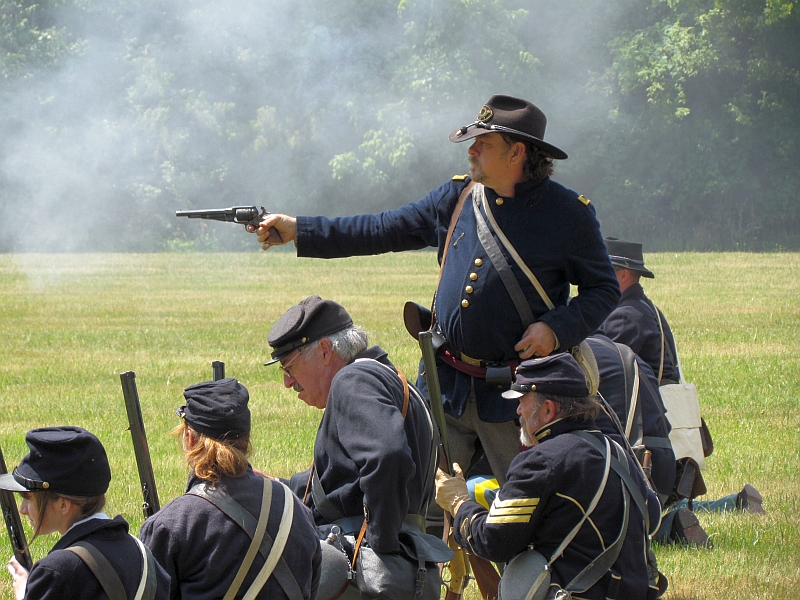
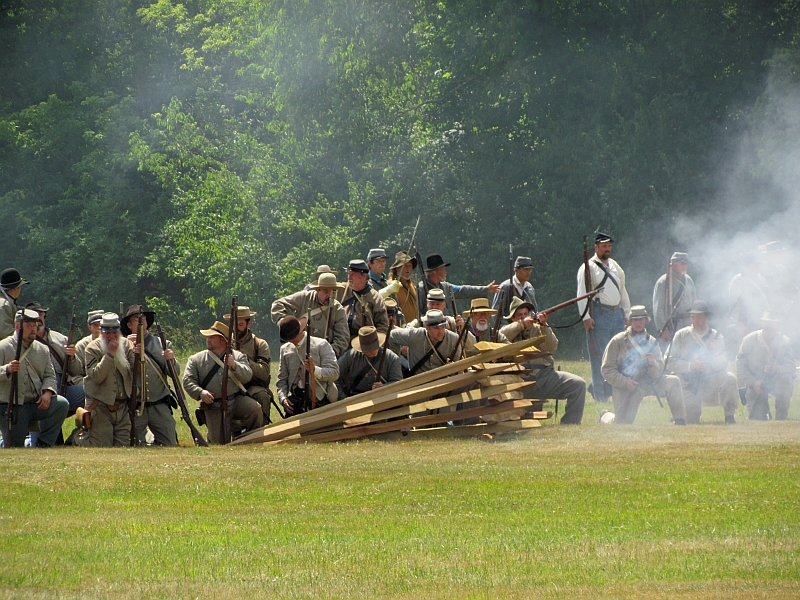
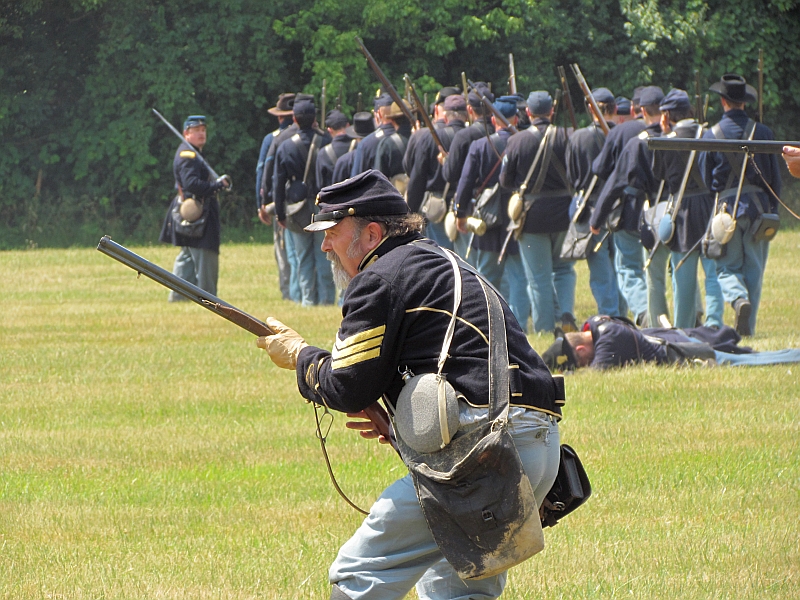
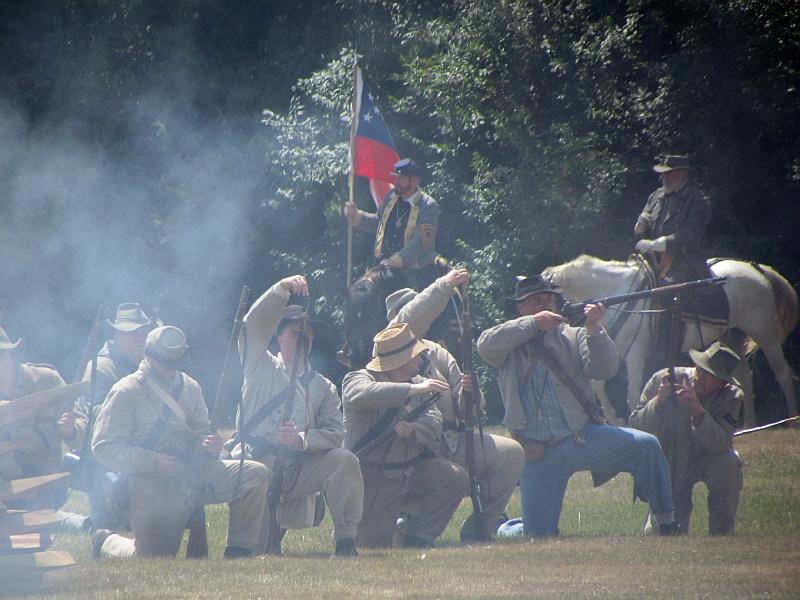
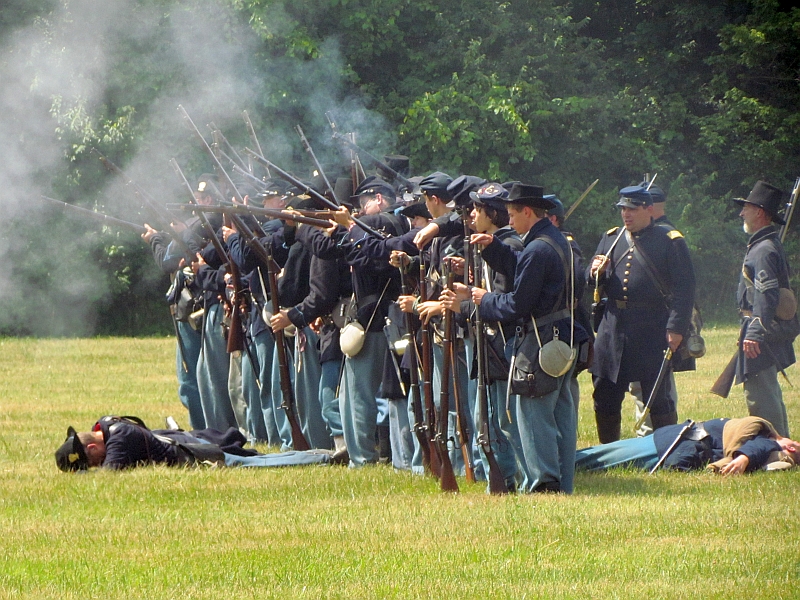
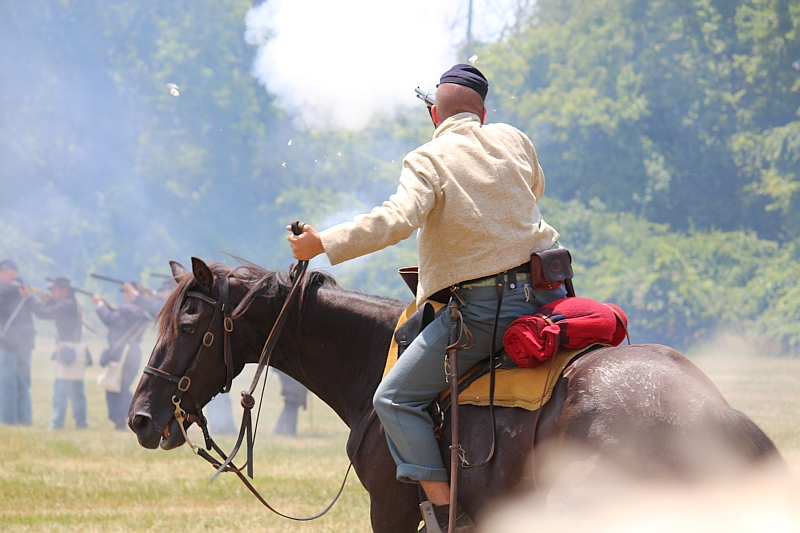

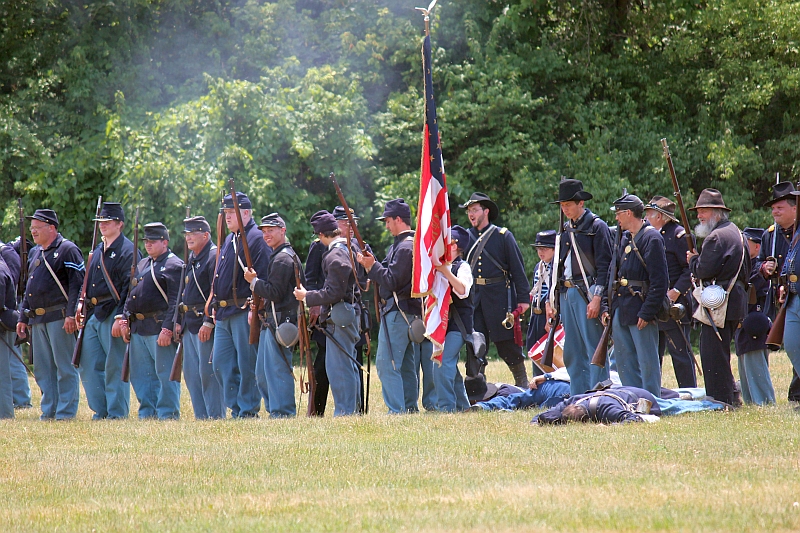
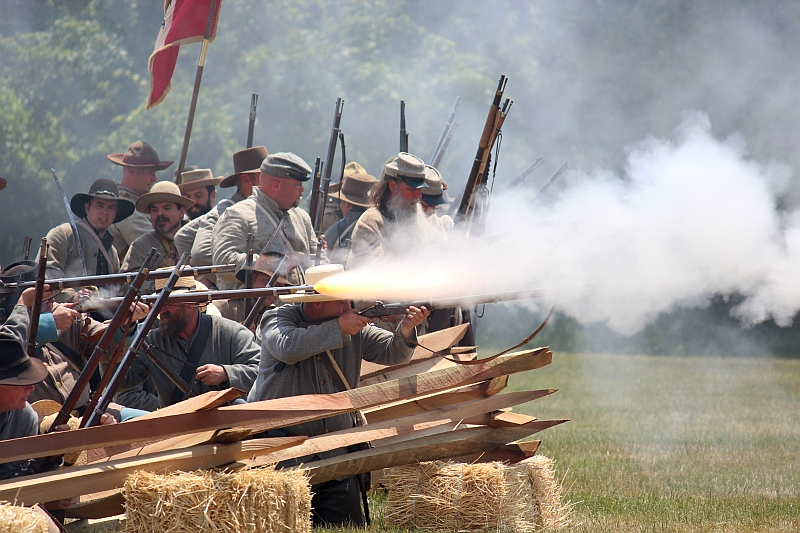

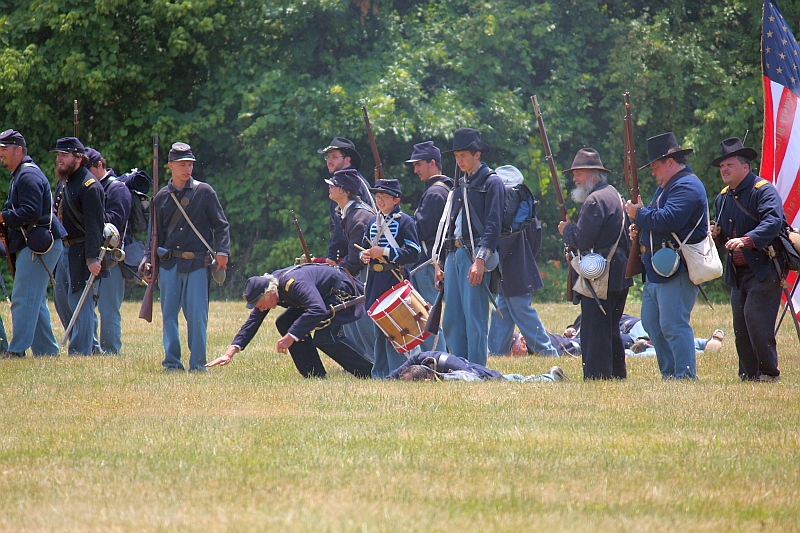
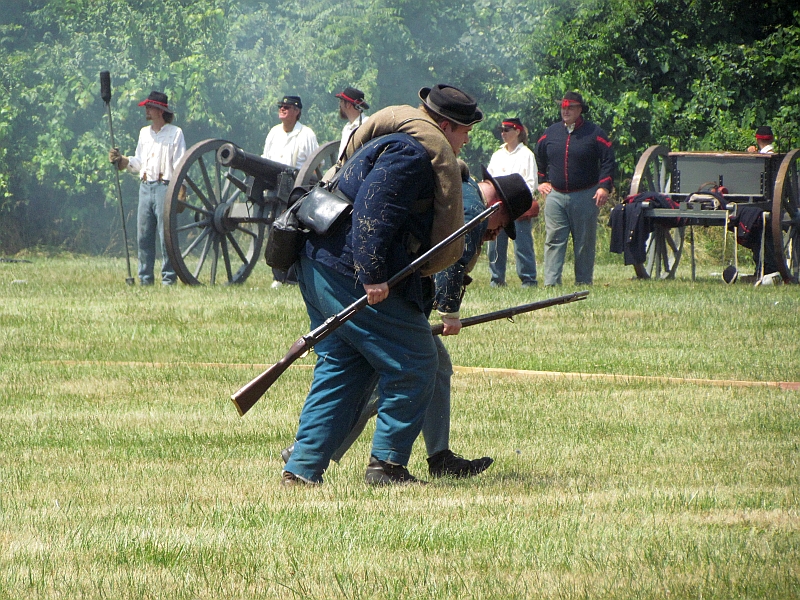
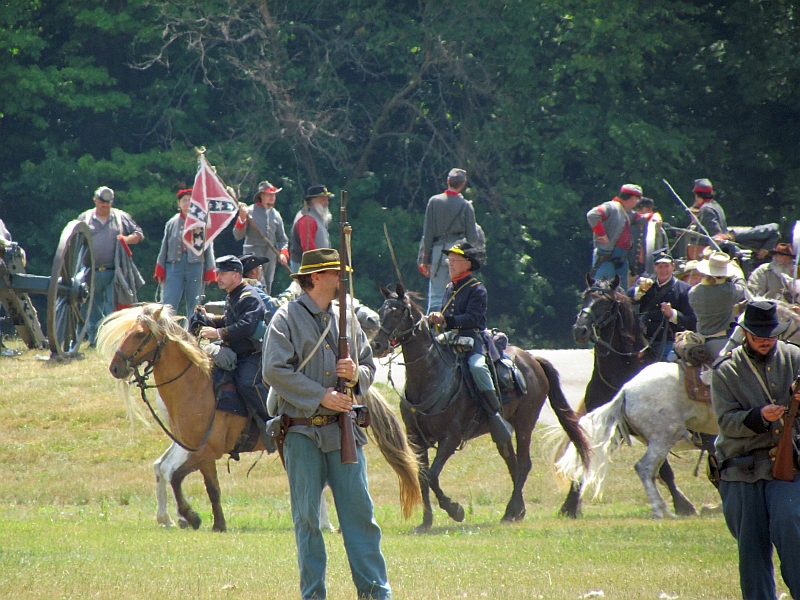
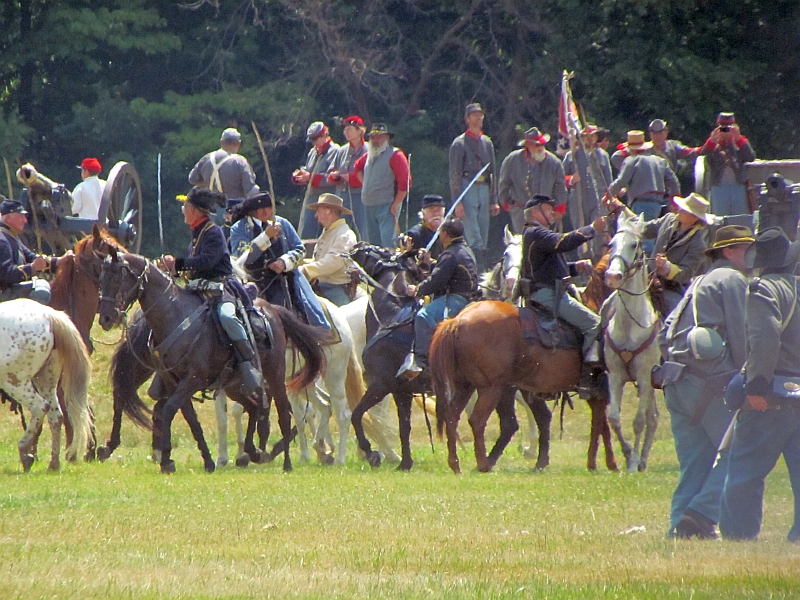


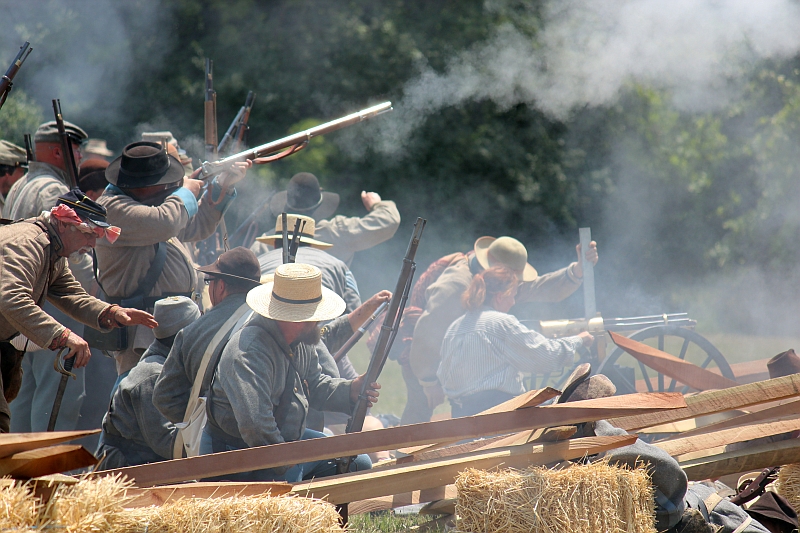

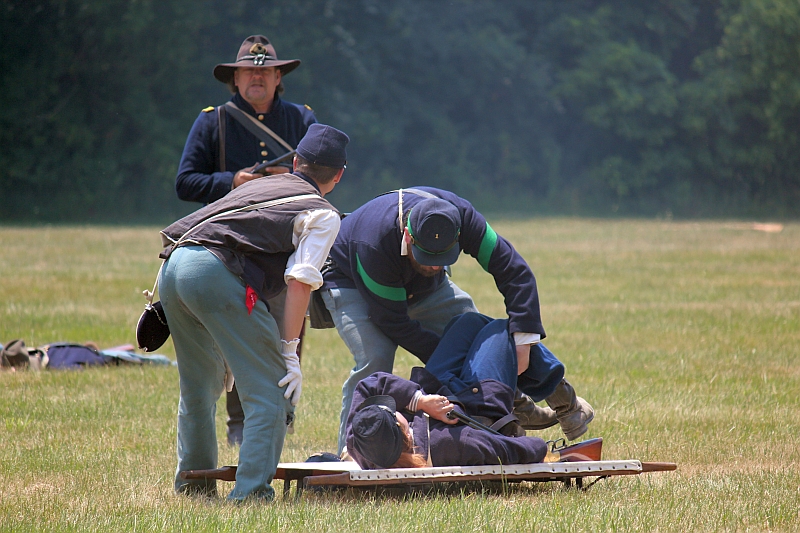
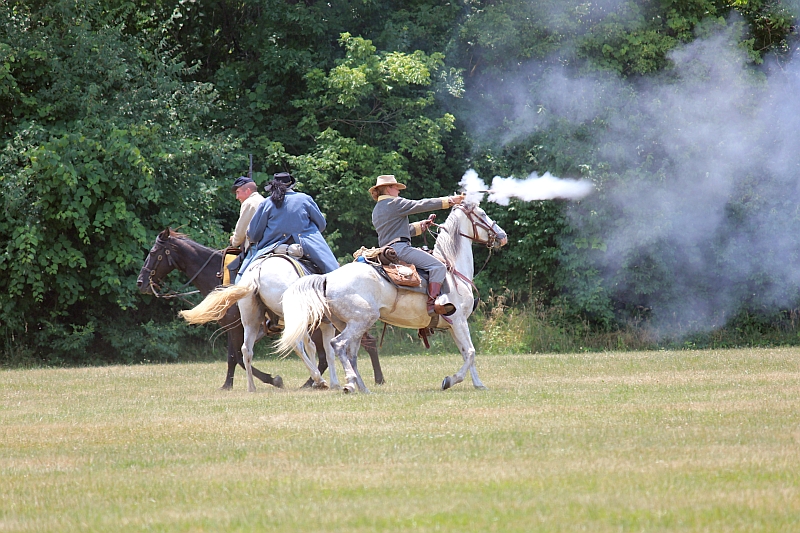
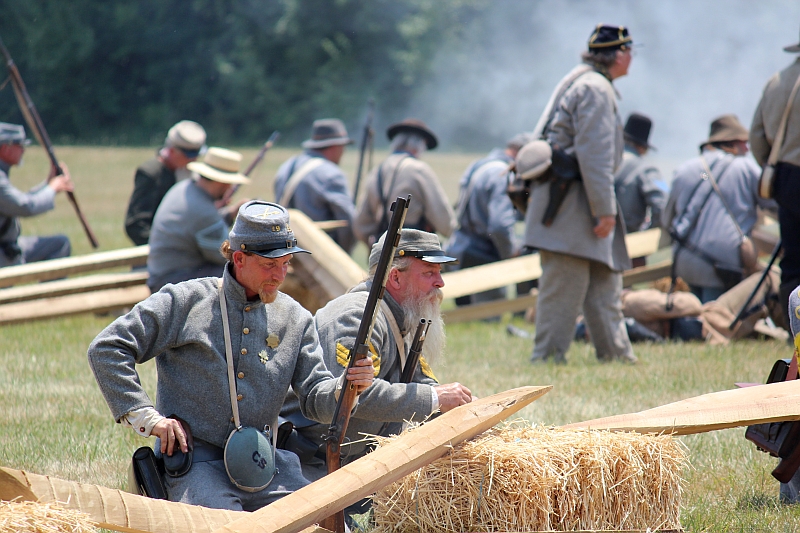

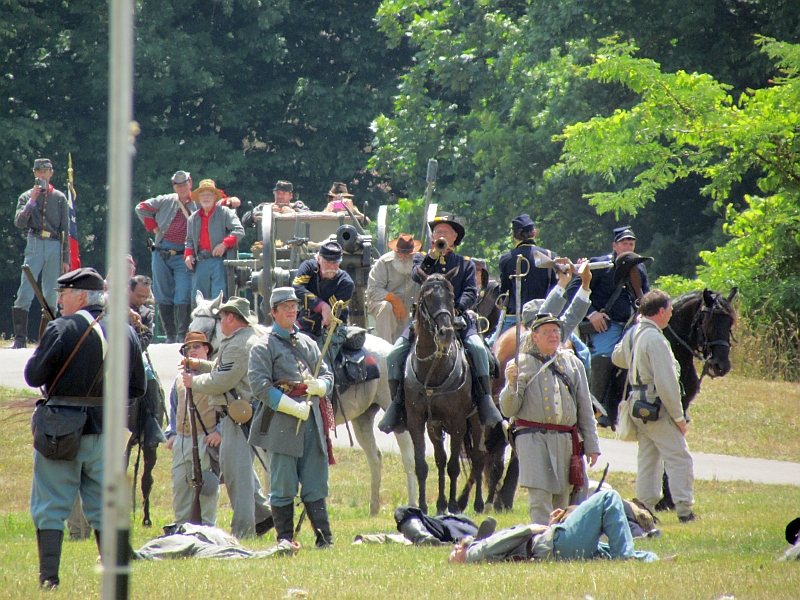
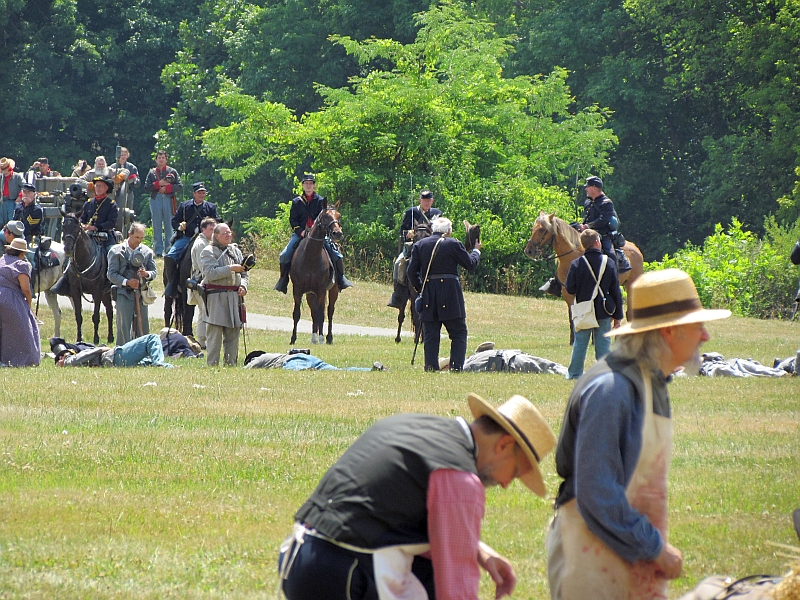
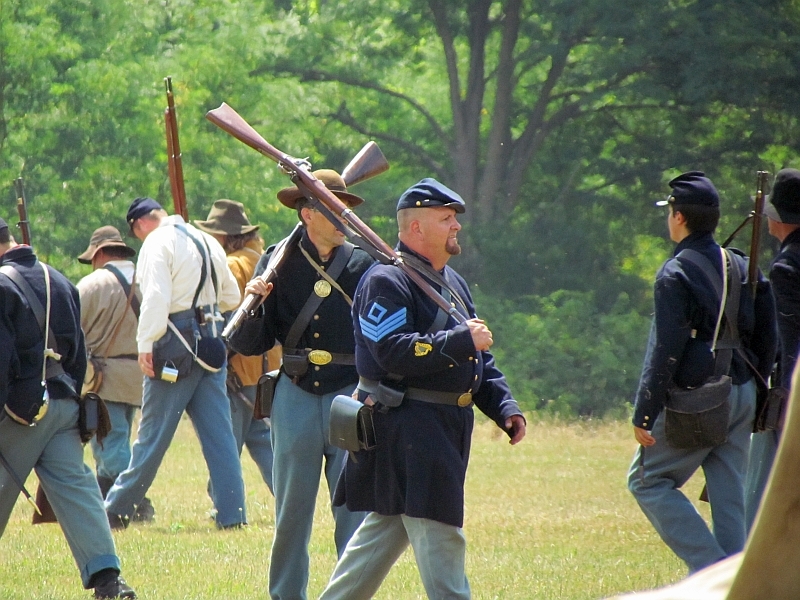

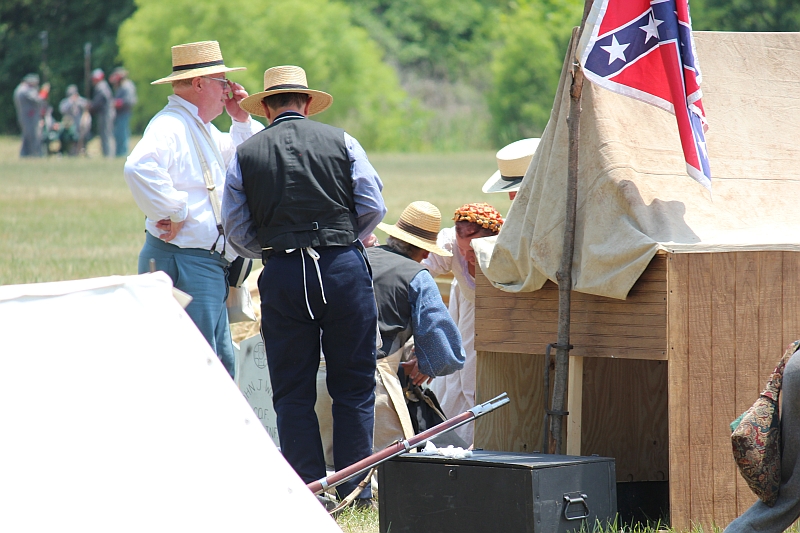
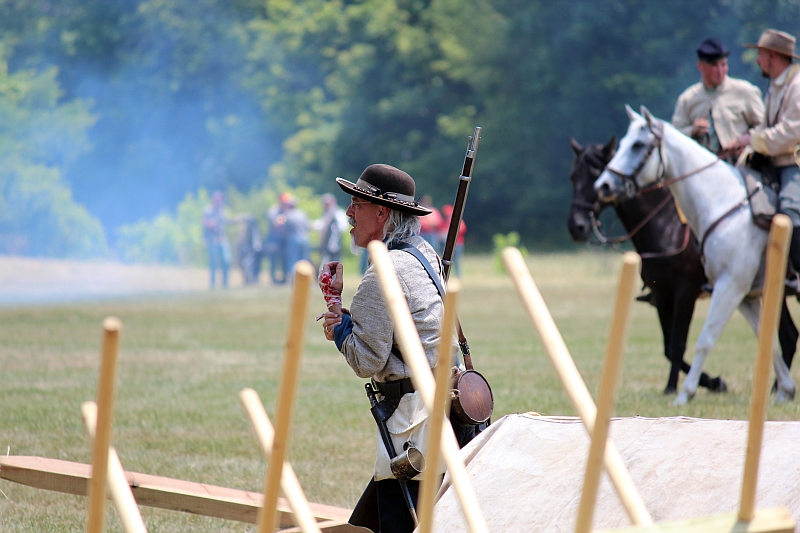
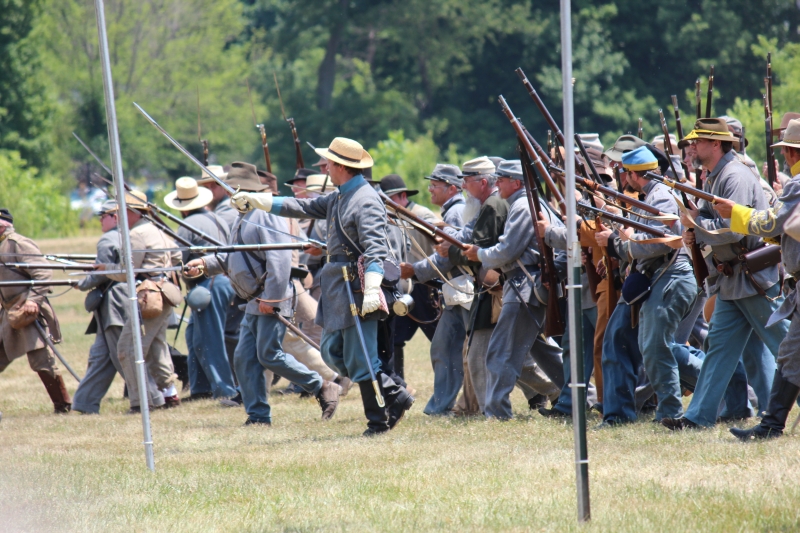
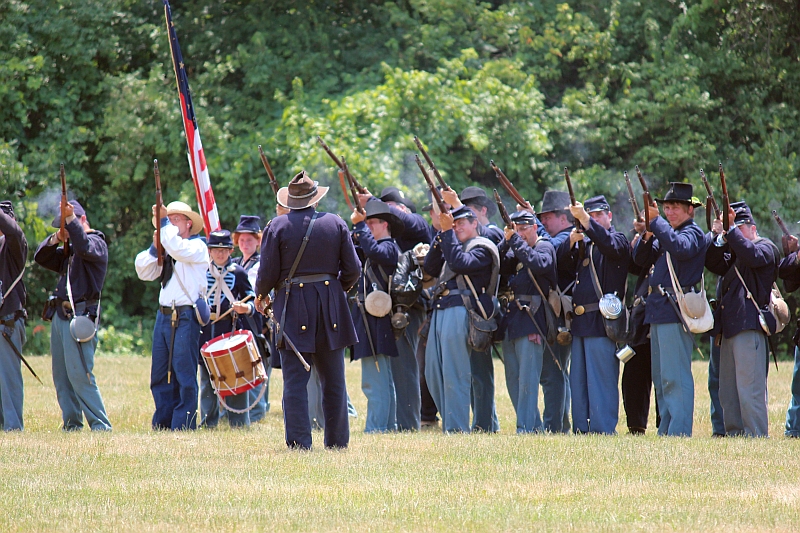
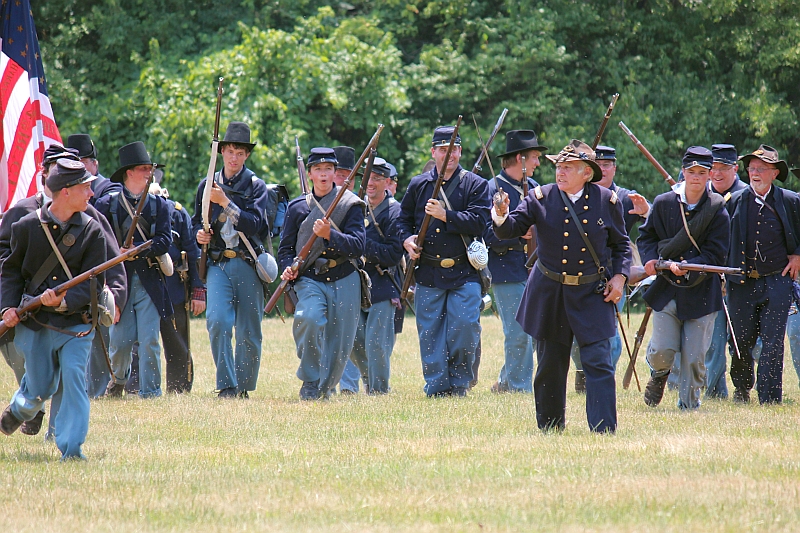
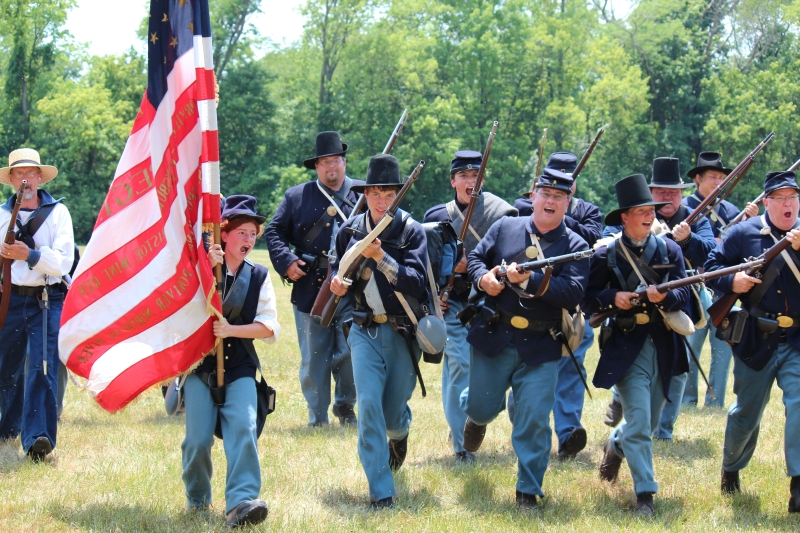
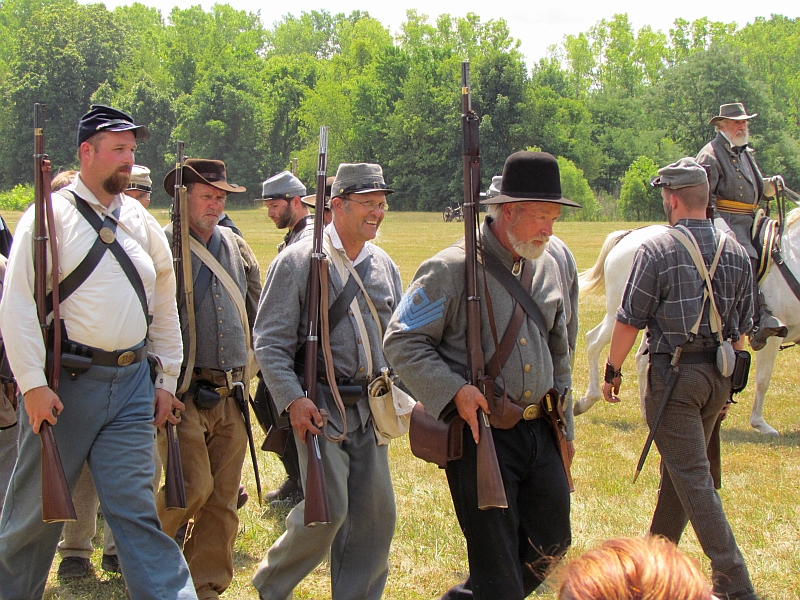
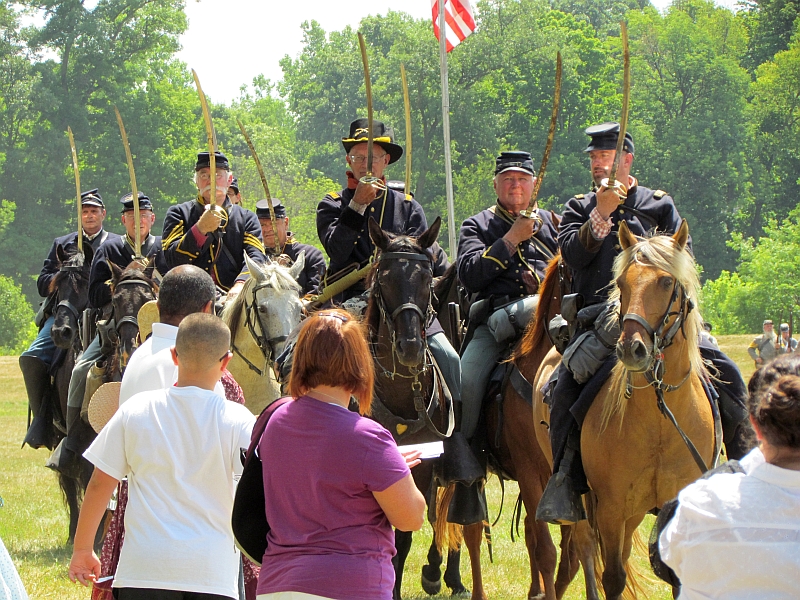
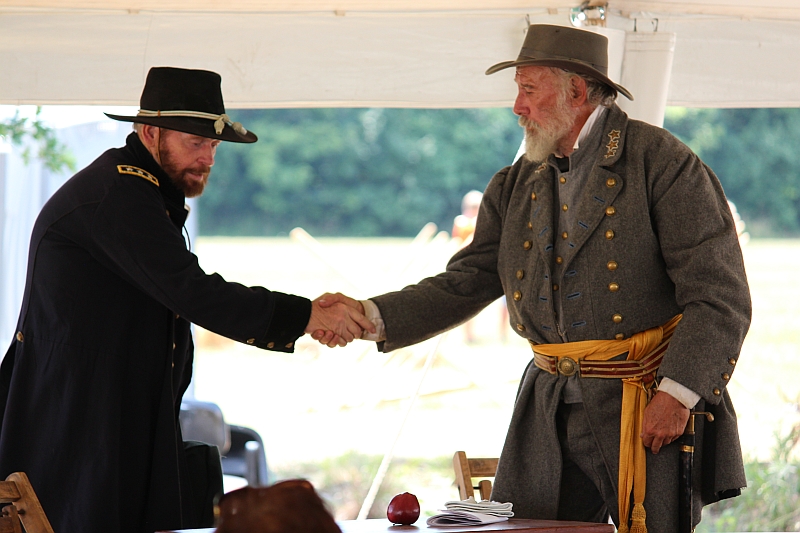
Keeping history alive! What a wonderful group of photos, capturing the action!
LikeLike
Thanks Pat! It was a great event!
LikeLike
A grand day out, well illustrated.
LikeLike
Thanks Tootlepedal! The battle’s narrator had an impeccable British accent, by the way.
LikeLike
You really put a lot of work into this post, Tracy. Well done. Very informative and entertaining.
LikeLike
Thanks Bob! It was my first visit to a re-enactor event, I’m sure there will be more!
LikeLike
We have one of the best restored frontier forts here in San Angelo. Fort Concho. They have 3-4 re-enactor events each year.
LikeLike
Shot by a Canon! Still giggling at that. I’ve heard of these re-enactments, but have never attended one. Thanks for sharing.
LikeLike
That was a great line by Abe, Patti 🙂
LikeLike
What a great post, Tracy – many of the action shots look like stills from a period film. You really caught the action and feel of the event – thanks for sharing!
LikeLike
Many thanks, Composer! I took tons of photos, glad I didn’t have all that film to develop!
LikeLike
Wonderful post, W.S….I have never been to a reenactment…but have read about some that occur around us…I just read “Shiloh” by Shelby Foote…and a few other Civil War books…”Killer Angels”, “Last Full Measure”, about the First Minnesota Volunteers…and a couple of others…all good books…it is amazing what those men and women went through…and the number of horses and wagons that it took to move those armies….thanks for the post…so good…
LikeLike
Jim, you’re reading some fine books there! Shelby Foote was an amazing author- what a masterful effort he put into ‘The Civil War: A Narrative’, which led to his starring role in Ken Burns’ Civil War documentary. History is always interesting, and the Civil War has many fascinating stories surrounding it. We have it so good these days that I think we lose appreciation for what our ancestors used to have to take for granted.
LikeLike
Great article. I keep telling myself I am going to go see this again (saw it once a few years ago). I have no excuse, I pass through Reynoldsburg several times a day.
LikeLike
I’ll definitely be back- it’s worth seeing again!
LikeLike
Amazing chronicle–almost like being there!
LikeLike
Thanks, Inger!
LikeLike
What a terrific post! It gave me insight into something that I knew little about. So many people so involved in the history of that era! Just incredible! Thank you for all of the effort that you put into this post!
LikeLike
Montucky, I was impressed by the number of people who obviously spent a lot of time, money and effort on this historic hobby!
LikeLike
Wow! It’s like I went back to the exciting past. Amazing images. Love it!
LikeLike
I felt the same, Island Traveler! Thanks my friend for the nice words.
LikeLike
Awesome! I’m pea-green with envy. I’ve always wanted to see one of these re-enactment camp and gatherings. Thanks so much for sharing these incredible photos about history. 🙂
LikeLike
E.C., it’s definitely worth a trip to see one! 🙂
LikeLike
These were wonderful… felt like I was right there. I’m so glad you were able to capture these shots and share them with us.
LikeLike
Many thanks, Robin! I had lots of fun!
LikeLike
Next reenactment in Reynoldsburg Ohio is June 22-23, 2013.
LikeLike
Thanks, I’ll be there, Paul!
LikeLike